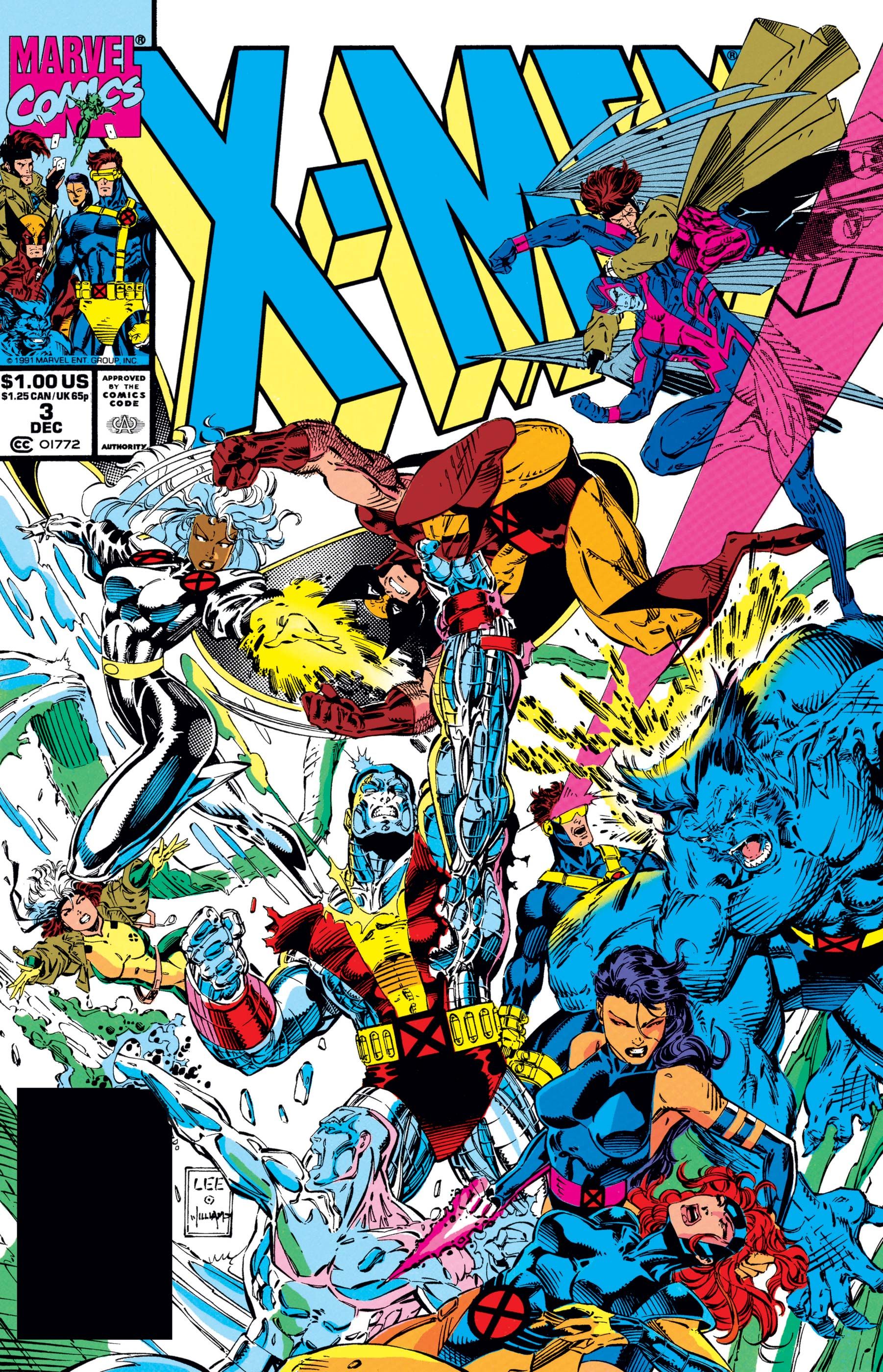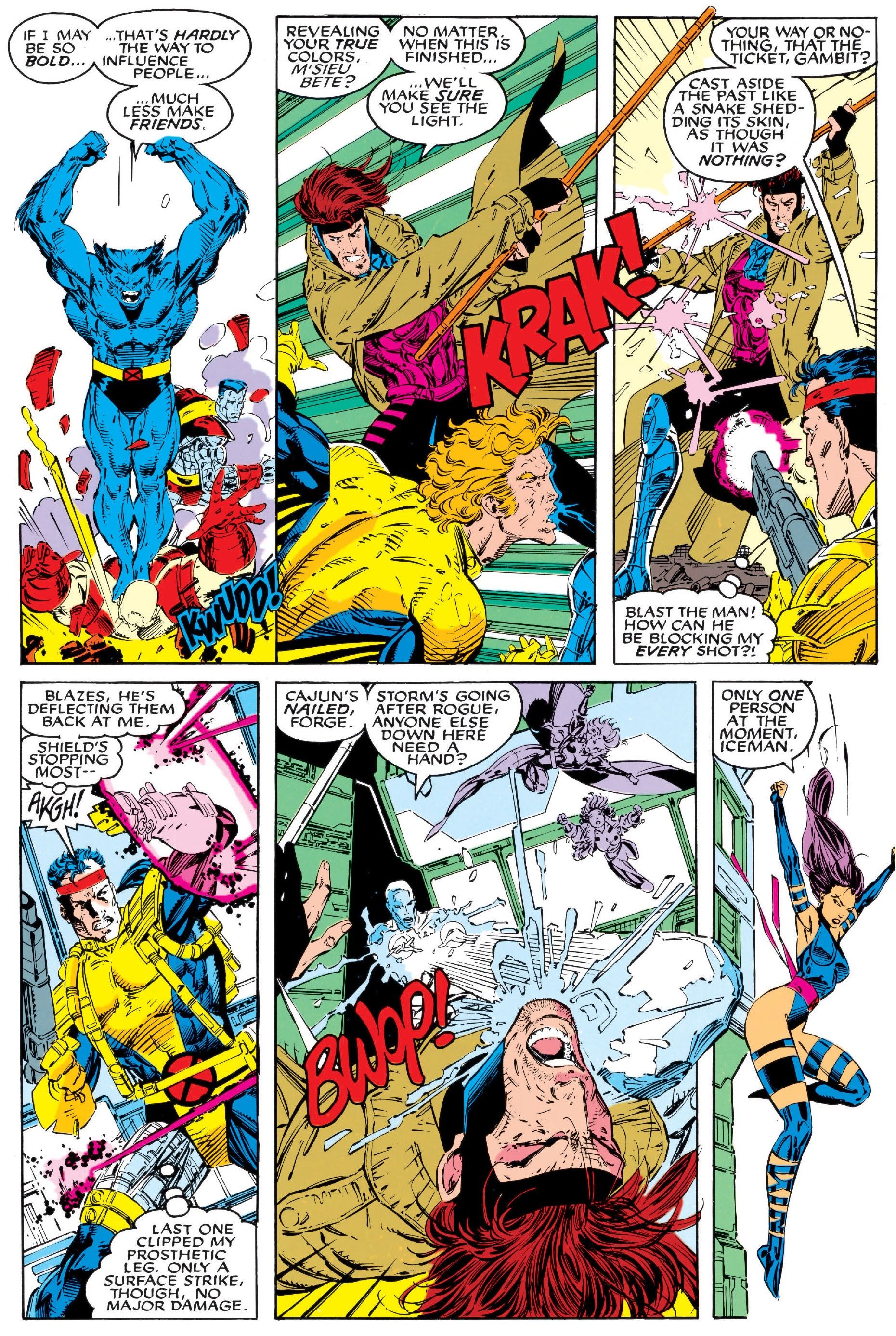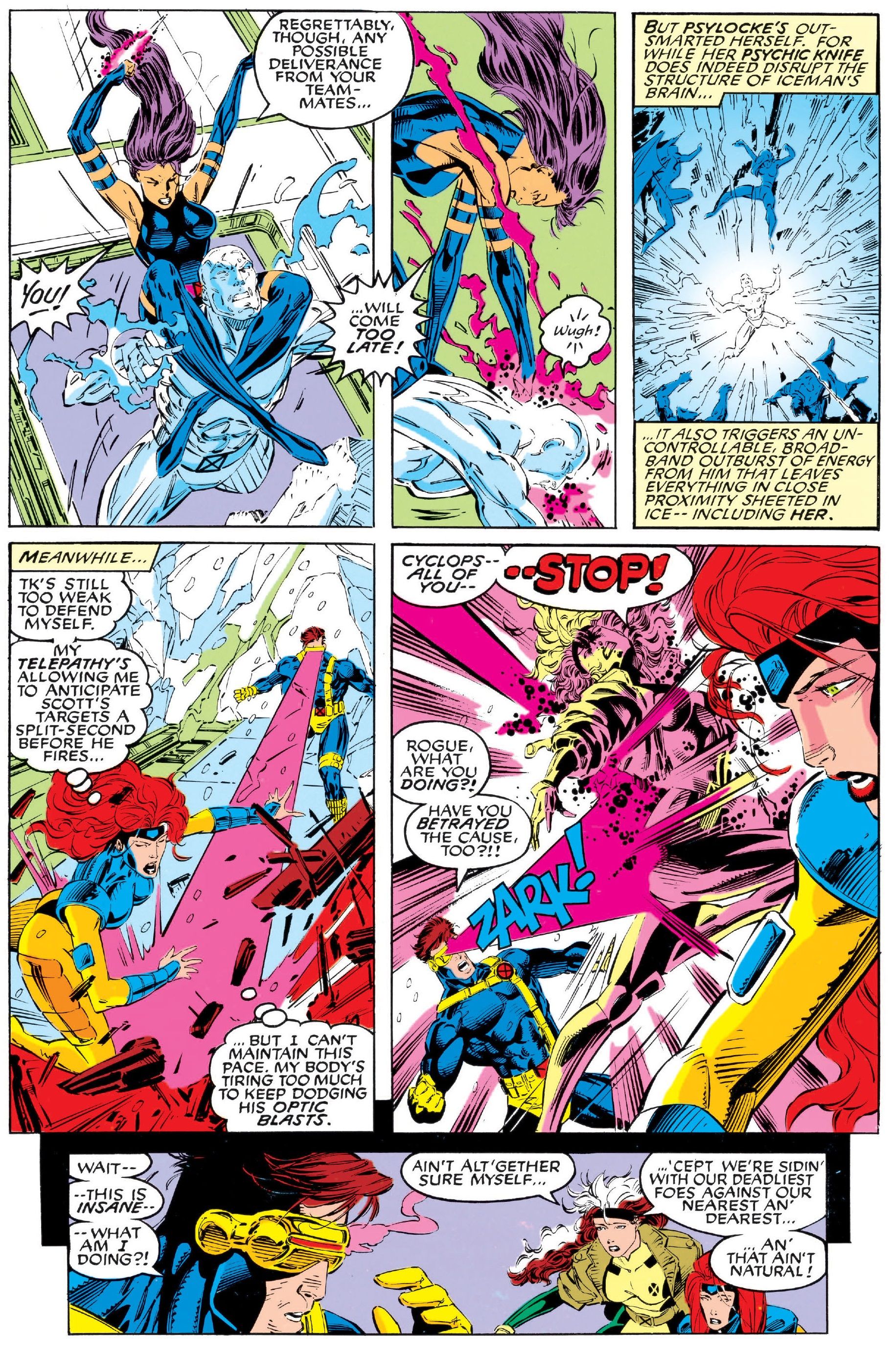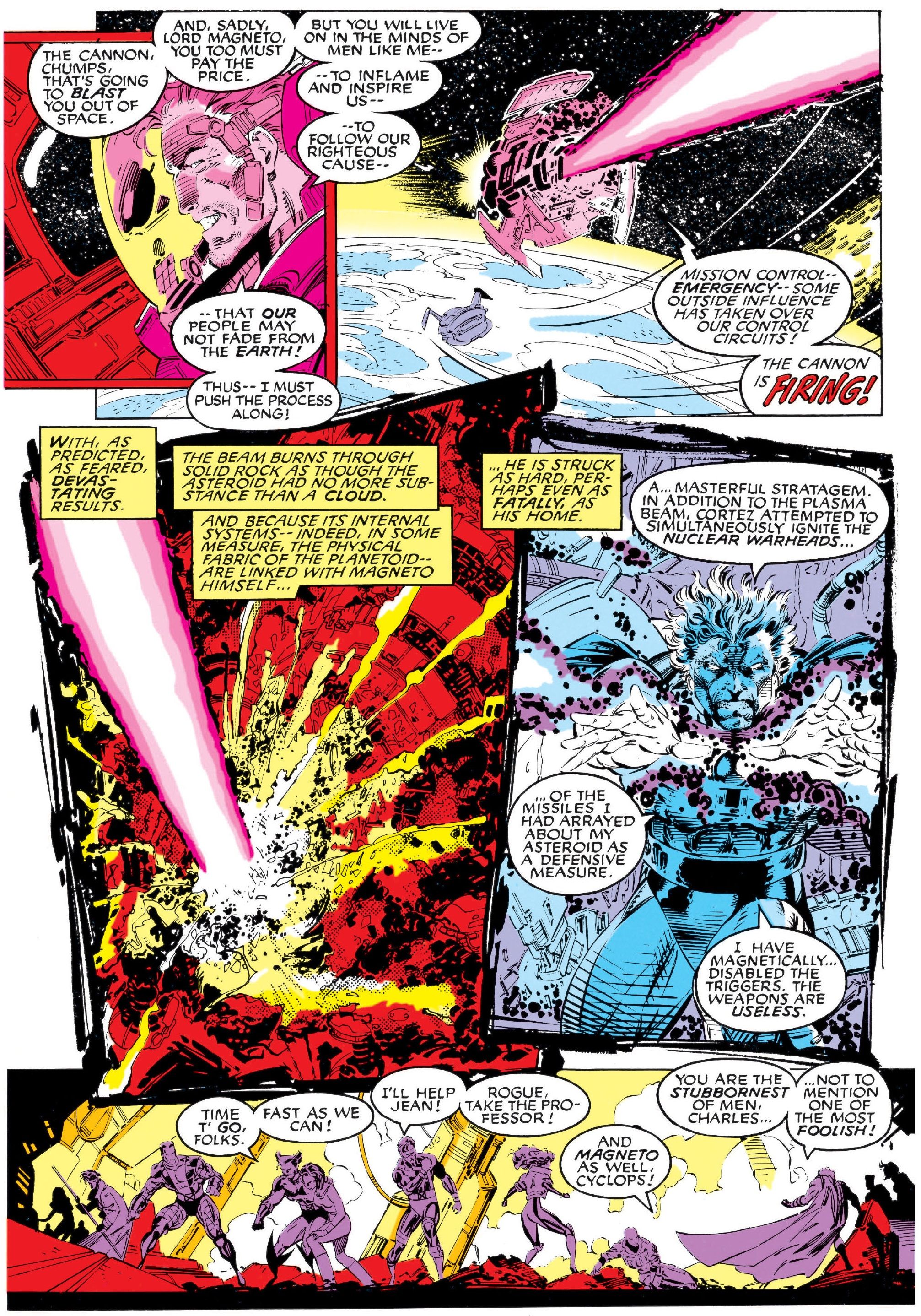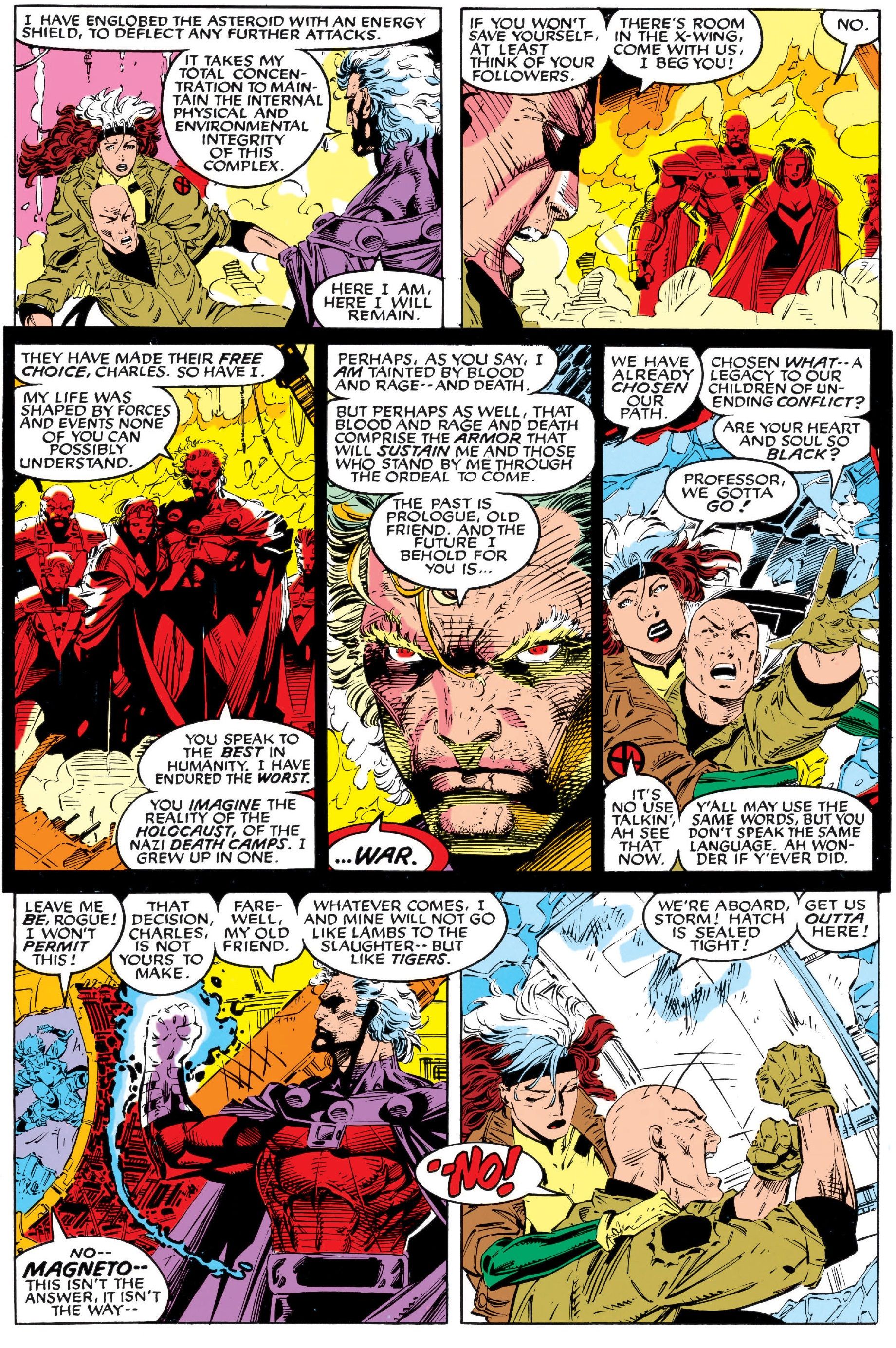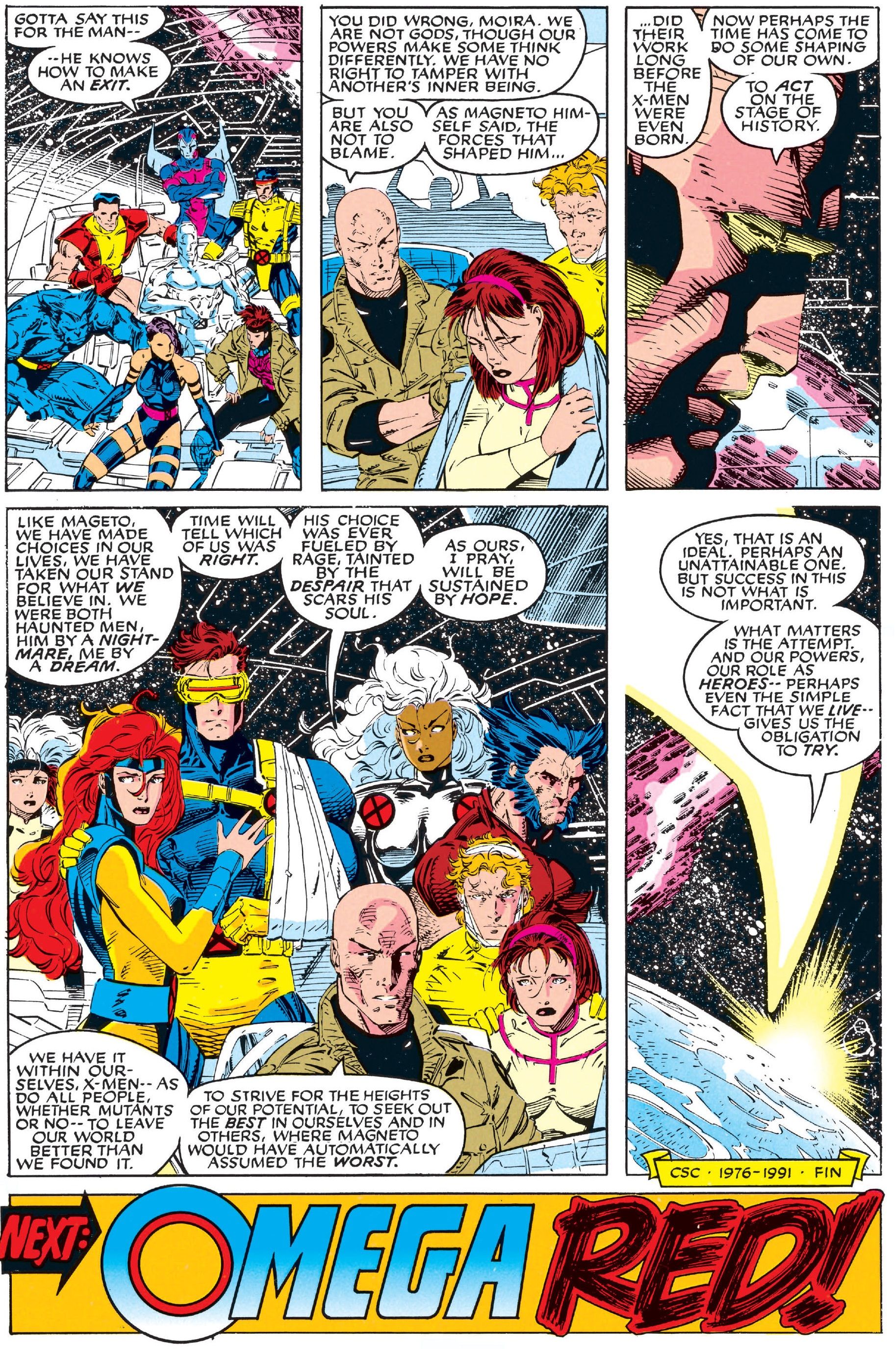Today, we look at Chris Claremont's final issue of his original X-Men run.
This is "Look Back," where every four weeks of a month, I will spotlight a single issue of a comic book that came out in the past and talk about that issue (often in terms of a larger scale, like the series overall, etc.). Each spotlight will be a look at a comic book from a different year that came out the same month X amount of years ago. The first spotlight of the month looks at a book that came out this month ten years ago. The second spotlight looks at a book that came out this month 25 years ago. The third spotlight looks at a book that came out this month 50 years ago. The fourth spotlight looks at a book that came out this month 75 years ago. The occasional fifth week (we look at weeks broadly, so if a month has either five Sundays or five Saturdays, it counts as having a fifth week) looks at books from 20/30/40/60/70/80 years ago.
Today, as part of this month's fifth week, we go back to October 1991 for X-Men #3 (by Chris Claremont, Jim Lee and Scott Williams), the final issue of Claremont's original X-Men run.
As I discussed in an old Comic Book Legends Revealed, one of the central conflicts between Jim Lee and Chris Claremont on their run together on Uncanny X-Men was that Lee wanted to revisit the classic characters in X-Men history and Claremont, you know, DIDN'T want to do that. That came to an early head when there was a conflict when Claremont wanted a mystery villain to be revealed as Loki, who Claremont had written during the famous Asgard Wars storyline in the X-Books, and wanted to follow up on the loose edges of that story. Lee, though, wanted the character to be revealed as Magneto, because he really wanted to do a Magneto story.
Lee later recalled, "When I came onto Uncanny X-Men I had a very strong sense of what X-Men stories should be. A lot of the stuff I wanted to do was to rehash or update stuff I had really liked as a kid, but Chris had done that maybe two or three times already. So there was a difference of opinion from the outset on what the stories should be. That's where the editor steps in, and you talk, and hopefully you compromise. One of the very first issues I did featured Rogue and Magneto, and she gets stranded on his island or something like that. Originally the villain was supposed to be Loki, I guess because Chris hadn't written many Loki stories. Now to me, Loki wasn't an X-Men villain and it didn't feel right, so we compromised and came back to Magneto. It was a case of Chris, who'd been on X-Men for some years, wanting to take the characters in very different directions, and me, a die-hard X-Men fan, just wanting to do the classic stuff. But it still worked. We worked out sound compromises and some really good stories came out of it."
It's really amazing looking back on that story and thinking of Magneto as a replacement character, as Claremont wrote him so well in that arc. Well, the conflicts continued (all cordial enough, just one guy wanting X and another guy wanting Y and the editor, Bob Harras, had to decided who what would happen, X or Y and ultimately, Harras sided with Lee, the superstar artist who was probably THE most popular artist in the entire comic book industry at that moment) and Lee and Whilce Portacio were given control of the X-Men titles, with them plotting both books and Lee drawing a new X-Men series while Portacio drew Uncanny X-Men. Claremont had one final arc on the series as the co-plotter/scripter, it was from X-Men #1-3. Here is the finale.
The concept is that Magneto has found a group of followers known, appropriately enough, as the Acolytes, led by Fabian Cortez, who appears to be increasing Magneto's powers.
Meanwhile, Magneto discovered that Moira MacTaggert had messed with his mind when he had been reverted to a baby. This caused him to use the same process on the X-Men Blue Team that had attacked him earlier in the arc. They were all now brainwashed into believing they were now followers of Magneto. So now the remaining X-Men had to take on their teammates, which was shown beautifully in this striking cover...
The front page gives Claremont a sweet sendoff (of course, it would be far from Claremont's final X-Men issue ever)....
We then get an excellent fight sequence as the remaining X-Men break into Magneto's satellite base and are attacked by their old friends...
The Psylocke sequence is really well illustrated.
SHIELD has been threatening to use a pulse cannon on the satellite and then Cortez escapes and speeds things up, as he HAS betrayed Magneto like Moira and Charles Xavier both believed...
Magneto then insists that the X-Men (who have since broken free of their brainwashing) escape while he stays behind. He warns Xavier that the next time they will face, it will be as enemies...
Claremont then gets one last substantial speech, as Xavier hopes for a better day...
What a nice sendoff to Claremont. It was assuredly not when he wanted to go, but he did a fine farewell!
If you folks have any suggestions for November (or any other later months) 2011, 1996, 1971 and 1946 comic books for me to spotlight, drop me a line at brianc@cbr.com! Here is the guide, though, for the cover dates of books so that you can make suggestions for books that actually came out in the correct month. Generally speaking, the traditional amount of time between the cover date and the release date of a comic book throughout most of comic history has been two months (it was three months at times, but not during the times we're discussing here). So the comic books will have a cover date that is two months ahead of the actual release date (so October for a book that came out in August). Obviously, it is easier to tell when a book from 10 years ago was released, since there was internet coverage of books back then.


